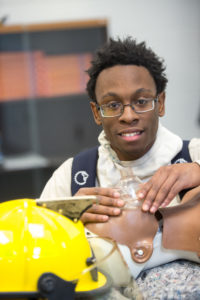 Colleagues,
Colleagues,
Making learning real and relevant is a big part of what we, in the Linked Learning field, do. We do this because we’ve seen, through research and testimonials, that when students are able to apply what they’re learning through professional pathways and experiences, their connections are deeper and they retain more of what they’re learning. Take Rosa, a 10th grader in the Education Academy at Skyline High School in Oakland: after teaching classes to elementary school students, Rosa said: “Learning how to do that has helped a lot at school with speeches and speaking in class. The smile on their faces were so rewarding to me. I really did feel like a teacher.”
Work-based learning (WBL), or providing students with real-life work experiences where they can apply their skills, is one of the four pillars of any high quality Linked Learning pathway. However, ensuring that a continuum of WBL opportunities is available to all students in a pathway remains one of our biggest challenges. If we care about truly incorporating WBL, it’s something we, as a field, need to improve.
This was on my mind when I attended the recent Linked Learning Convention in Anaheim. I attended a presentation about the work that Clairemont High School in San Diego is doing, and the progress they’ve seen over the last two years – and it gave me hope.
With the support of San Diego Unified, the Moxie Foundation, and ConnectEd, Clairemont High School is now a Linked Learning Demonstration School, with four pathways operating “wall-to-wall” and serving about 1,000 students. The school seeks to provide every 11th grader with a mentor, matching community volunteers with students who are ready to apply their lessons in the workplace. 12th grade interns have taken a sequence of three or more courses for their chosen industry pathway in business, engineering, medical sciences or information technology. Students are all trained in the applications and digital tools necessary for succeeding in many of today’s work places. In addition, students have had extensive hands‐on training in essential workplace skills such as: communication, collaboration, teamwork, analysis/ solution mindset, entrepreneurial mindset, self‐awareness, resilience, adaptability and workplace professionalism.
Most importantly, Clairemont’s approach to WBL has been planful and comprehensive, with lots of tools and other resources the school generously shares with others. I hope you’ll explore these tools, and share them with someone else who might find them helpful.
Learn more about the mentorship program.
Learn more about the internship program.
-Gary Hoachlander
)